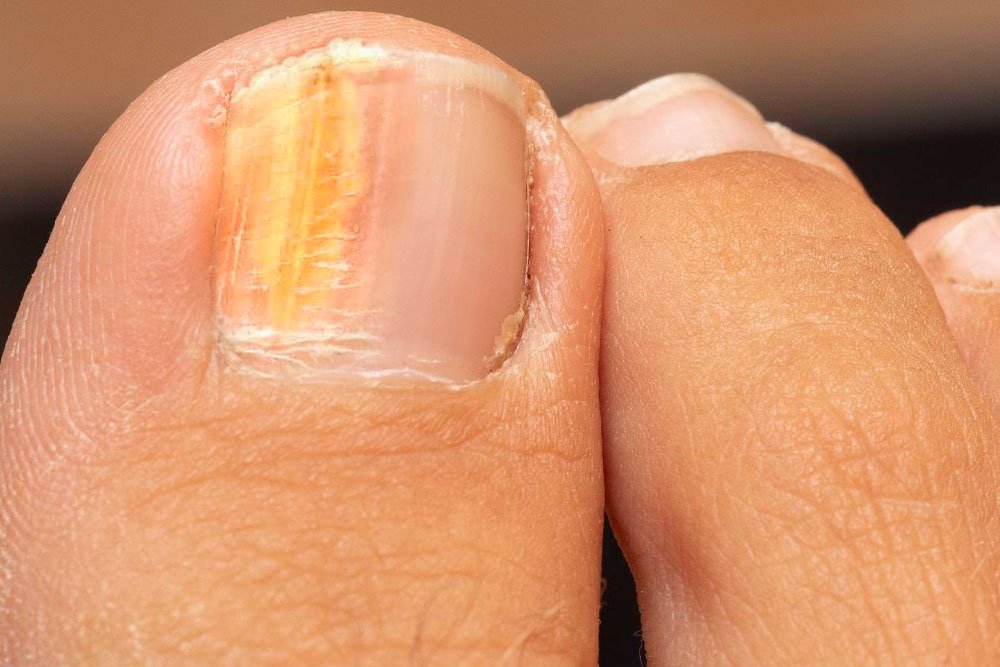Toenail fungus, also known as onychomycosis, is a common condition that affects many people and often causes discomfort and embarrassment. While it may seem like a minor issue, toenail fungus can be surprisingly difficult to treat and eliminate. The persistent nature of this infection has left many people wondering: Why is toenail fungus so hard to get rid of? In this post, we will explore the reasons behind its stubbornness and discuss the most effective treatment options available, including advanced solutions like Laser Therapy for Toenail Fungus.
What Is Toenail Fungus?
Toenail fungus is caused by a fungal infection that typically starts when fungi, such as dermatophytes, yeasts, or molds, invade the nail. The infection often begins at the tip of the toenail and can spread deeper into the nail bed. It leads to discoloration, thickening, crumbling, and sometimes an unpleasant odor. While it may not cause severe pain in its early stages, untreated toenail fungus can become more severe and affect the overall health of the nail.
Why Is Toenail Fungus So Hard to Get Rid Of?
There are several reasons why toenail fungus can be so difficult to treat effectively. Understanding these factors can help in choosing the best treatment plan to eliminate the infection once and for all.
1. Fungi Thrive in Warm, Moist Environments
Toenail fungus thrives in environments that are warm, moist, and dark—conditions commonly found in shoes, socks, and the spaces between toes. This creates an ideal breeding ground for the fungi to grow and spread. Even if you treat the fungus on the surface, it can persist and reinfect the nail if the underlying environment remains conducive to fungal growth.
2. Toenails Are Slow to Regrow
Unlike fingernails, toenails grow much more slowly. On average, toenails take about 12 to 18 months to fully regrow. This slow growth rate means that it can take a long time to notice improvements from treatments, and it may take even longer for the infection to clear completely. In some cases, the fungus may still be present in the nail bed, even after the surface appears healed.
3. The Nail Barrier
Toenails act as a physical barrier to the infection, making it harder for topical treatments, such as antifungal creams or ointments, to penetrate deeply enough to reach the fungus. While some treatments can work effectively on the surface, they may not be able to reach the deeper layers of the nail or the nail bed, where the infection often resides. This makes topical treatments less effective for more severe cases of toenail fungus.
4. Resistance to Antifungal Medications
Fungi are notorious for developing resistance to antifungal medications over time. As with any infection, the more frequently a medication is used, the more likely the fungi are to adapt and become resistant to it. This can make conventional treatments less effective and prolong the infection. Oral antifungal medications, which are often prescribed for more severe cases, can also have side effects, including liver damage, which may limit their use.
5. Underlying Health Conditions
Certain health conditions, such as diabetes, poor circulation, or a weakened immune system, can make it more difficult for the body to fight off infections, including toenail fungus. People with these conditions may find that their fungal infections are more persistent and harder to treat. Additionally, individuals who are immunocompromised may be at a higher risk of developing fungal infections in the first place.
6. Recurrence of the Infection
Even after successful treatment, toenail fungus can often recur. Fungi are ubiquitous in the environment, and it is easy to be reinfected if you are exposed to contaminated surfaces, such as public showers, swimming pools, or shared footwear. Additionally, if the fungus is not completely eradicated, it can resurface and reinfect the nail.
How to Effectively Treat Toenail Fungus
While toenail fungus can be difficult to get rid of, there are several effective treatment options available. The key to successful treatment is persistence and the use of the right combination of therapies.
1. Topical Antifungal Treatments
Topical antifungal creams and ointments are often the first line of defense against toenail fungus. These treatments can be effective for mild cases, especially when used consistently over time. However, as mentioned earlier, they may not always penetrate deeply enough to reach the fungus in the nail bed.
2. Oral Antifungal Medications
For more severe cases of toenail fungus, oral antifungal medications may be prescribed. These medications work from the inside out, targeting the infection in the nail bed. However, they can take several weeks to show results, and they may cause side effects, such as gastrointestinal issues or liver problems, making them unsuitable for everyone.
3. Laser Therapy for Toenail Fungus
One of the most promising advancements in the treatment of toenail fungus is Laser Therapy for Toenail Fungus. Laser therapy uses targeted light to penetrate the nail and destroy the fungal cells without harming the surrounding tissue. This treatment is effective, non-invasive, and generally pain-free. It also has a high success rate, particularly when combined with other treatments, such as topical antifungal medications. For more information on this treatment option.
4. Home Remedies
Some people opt for natural remedies to treat toenail fungus, such as tea tree oil, vinegar soaks, or Vicks VapoRub. While these treatments may provide some relief, they are often not as effective as medical treatments and should be used with caution. If you choose to use home remedies, it is important to consult with a healthcare professional to ensure you are not delaying more effective treatment.
Conclusion
Toenail fungus can be a stubborn and persistent infection, but with the right treatment plan, it is possible to eliminate it. By understanding the factors that make toenail fungus so hard to get rid of, you can better appreciate the importance of seeking professional treatment. Whether you choose topical treatments, oral medications, or innovative options like Laser Therapy for Toenail Fungus, the key is consistency and persistence. If you’re struggling with toenail fungus, don’t hesitate to consult with a podiatrist for the best course of action.



